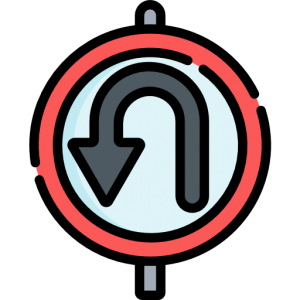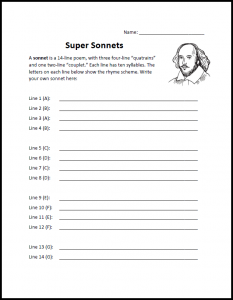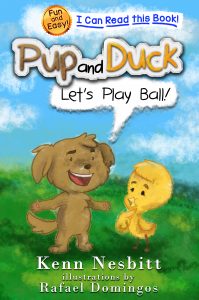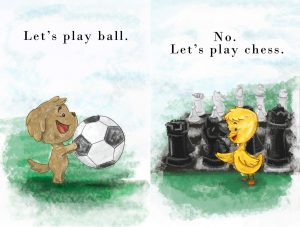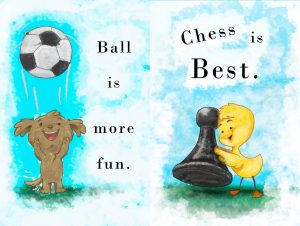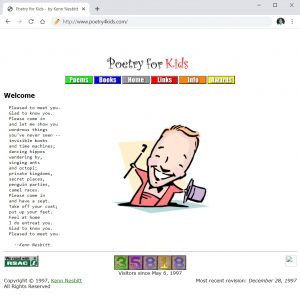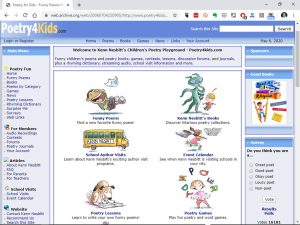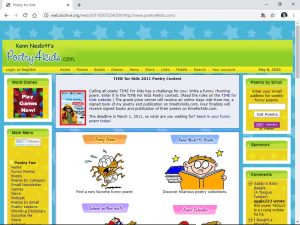A Poetry-Writing Lesson for Kids

The sonnet is one of the most common traditional poetic forms. They have been written for hundreds of years with some of the most well-known sonnets written by William Shakespeare.
Though the sonnet was originally created in Italy, with the earliest sonnets written in Italian, they have been written in English, French, Dutch, German, and many other languages as well.
In the English language, there are two main kinds of sonnets: the “English” (or “Shakespearean”) sonnet and the “Spenserian” sonnet, named after the poet Edmund Spenser.
In this lesson, you will learn how to write an English sonnet because this is the most common type of sonnet.
The Rules of the Sonnet
In poetry, a “form” is a set of rules describing how to write that kind of poem. English sonnets have these rules:
- They are fourteen lines long.
- The fourteen lines are divided into three groups, or “stanzas,” of four lines each, followed by a final two-line “couplet.” (A four-line stanza is also known as a “quatrain.” A couplet is two lines together that rhyme.)
- Each of the fourteen lines is ten syllables long.
In addition to the number of lines, and the number of syllables per line, sonnets also have a special rhyme scheme:
- Each of the three stanzas has an ABAB rhyme scheme. This means that the first and third lines of each stanza rhyme with each other, and the second and fourth lines rhyme with each other.
- The final couplet has an AA rhyme scheme, meaning that those two lines rhyme with one another.
Lastly, the first line of a sonnet should state the “theme.” In other words, it should say what the sonnet is about. And the final couplet should give the reader a “conclusion” or ending to the poem.
Because of all these rules, sonnets can be more challenging to write than shorter, simpler poetic forms such as haiku, diamantes, or cinquains. But it can also be more rewarding to know that you can write a poem like Shakespeare did.
Getting Started
The first thing you need to do to write a sonnet is figure out what you want to write about. You can write a sonnet about anything, but it’s easiest to write about something you know. Since you now know all the rules for writing a sonnet, why not write a sonnet about that? Here’s an example:
My Teacher Said to Write a Sonnet Now
My teacher said to write a sonnet now.
She told me, “It should be a work of art.”
I’d like to but I’m really not sure how.
I wish someone would show me where to start.
I heard the rhymes should be ABAB,
which means I can’t rhyme every single word.
The second and the fourth lines rhyme, you see.
And you should rhyme the first line with the third.
The first three stanzas all have four lines each.
The final couplet? That has only two.
A sonnet’s not an easy thing to teach.
I guess that’s what this poem aims to do.
It seems that starting was the hardest part.
I hope the teacher likes my work of art.
Another good thing to write a sonnet about is something you like. For example, I like my dog, so I thought I’d write a sonnet about him. However, since I also like funny poems, I decided to make up a funny – not true – story about him. Here it is:
My Dog Is Not the Smartest Dog Alive
My dog is not the smartest dog alive.
He says that submarines know how to dance.
He seems to think that two plus two is five.
He’s sure Japan’s the capital of France.
My dog declares that tigers grow on trees.
He tells me that he’s twenty-nine feet tall.
He argues only antelopes eat cheese,
then adds that ants are good at basketball.
He swears the sun is made of candy bars.
It seems to me my dog is pretty dense.
He says he’s seen bananas play guitars.
He talks a lot but doesn’t make much sense.
Although I love my dog with all my heart,
I have to say, he isn’t very smart.
Your Turn
Now that you know how to write a sonnet, why not give it a try yourself? Write one about your favorite game or pet or food, about your friends or family, or even about how hard it is to write a sonnet. And, most importantly, have fun!
Worksheet
Kenn Nesbitt, former U.S. Children's Poet Laureate, is celebrated for blending humor and heart in his poetry for children. Known for books such as "My Cat Knows Karate" and "Revenge of the Lunch Ladies," he captivates young readers globally.
Latest posts by Kenn Nesbitt
(see all)

